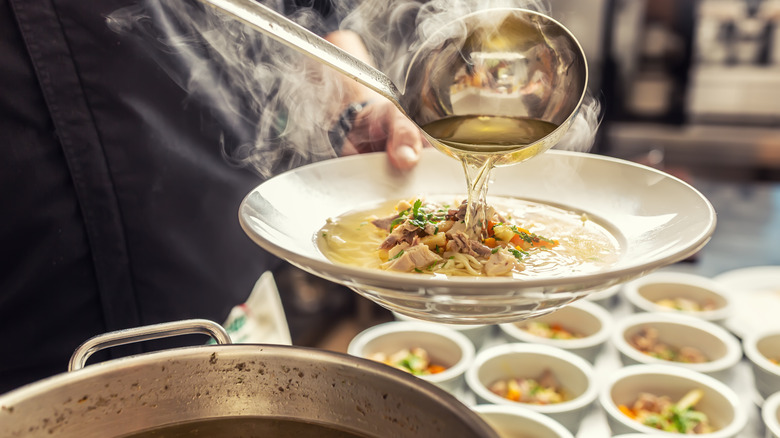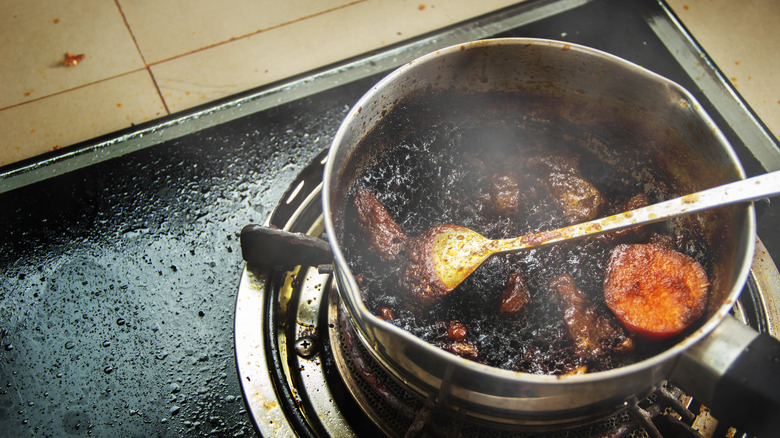The Easy Way To Avoid Burnt Spots In Your Soup
If you ask us, a bowl of comforting soup is good any time of year. Because of the availability of certain ingredients, some varieties are more seasonal than others, like silky butternut squash or savory pumpkin, but other soups, like chicken noodle, French onion, and roasted tomato are blissful and evergreen. And let's face it, a dish with rich and distinctive flavors could probably be turned into soup. Think about it: Baked potato soup, chicken tortilla soup, and even broccoli cheddar soup all fit that mold. This is just the tip of the iceberg regarding how many types of soup you can make, and if you've got a countertop or immersion blender, you're pretty much equipped! However, don't assume that soup preparation is necessarily a set-it-and-forget-it situation.
In some cases, soup needs a babysitter. If you're making it in the slow cooker, there is little need to worry. However, when cooking soup on the stove, you must watch it to ensure it doesn't boil over and no scorching occurs on the bottom of the pan. You'd think with all the liquid, there would be no potential for burning, but LovingFood explains that meat and vegetables can sink to the bottom of the pot, stick to it, and burn. While frequent stirring is an easy fix, better cookware can save you some trouble.
A heavy pot with a thick walls helps
According to America's Test Kitchen, in order to help prevent your soup from scorching, infusing your dish with a burnt flavor, use a heavy pot with thick walls. This type of pot transfers the heat more evenly, whereas a cheaper one transfers mostly from the bottom. Goodfood says this happens because the starches and proteins undergo the Maillard reaction, and bond with the hottest part of the pot. Once carbonization occurs, the reaction quickly snowballs, attracting even more starch and protein until you eventually have a dark, gummy crust.
Not only is cheaper cookware prone to burning food, but it will likely only get worse. World of Pans points out that due to warping, there are hot and cold spots, and food is more likely to scorch in the hotter areas. Allrecipes does a deep dive on several quality stainless steel and enamel stock pots, and you won't regret spending the extra money on a quality pot, for their uses go far beyond soup.

